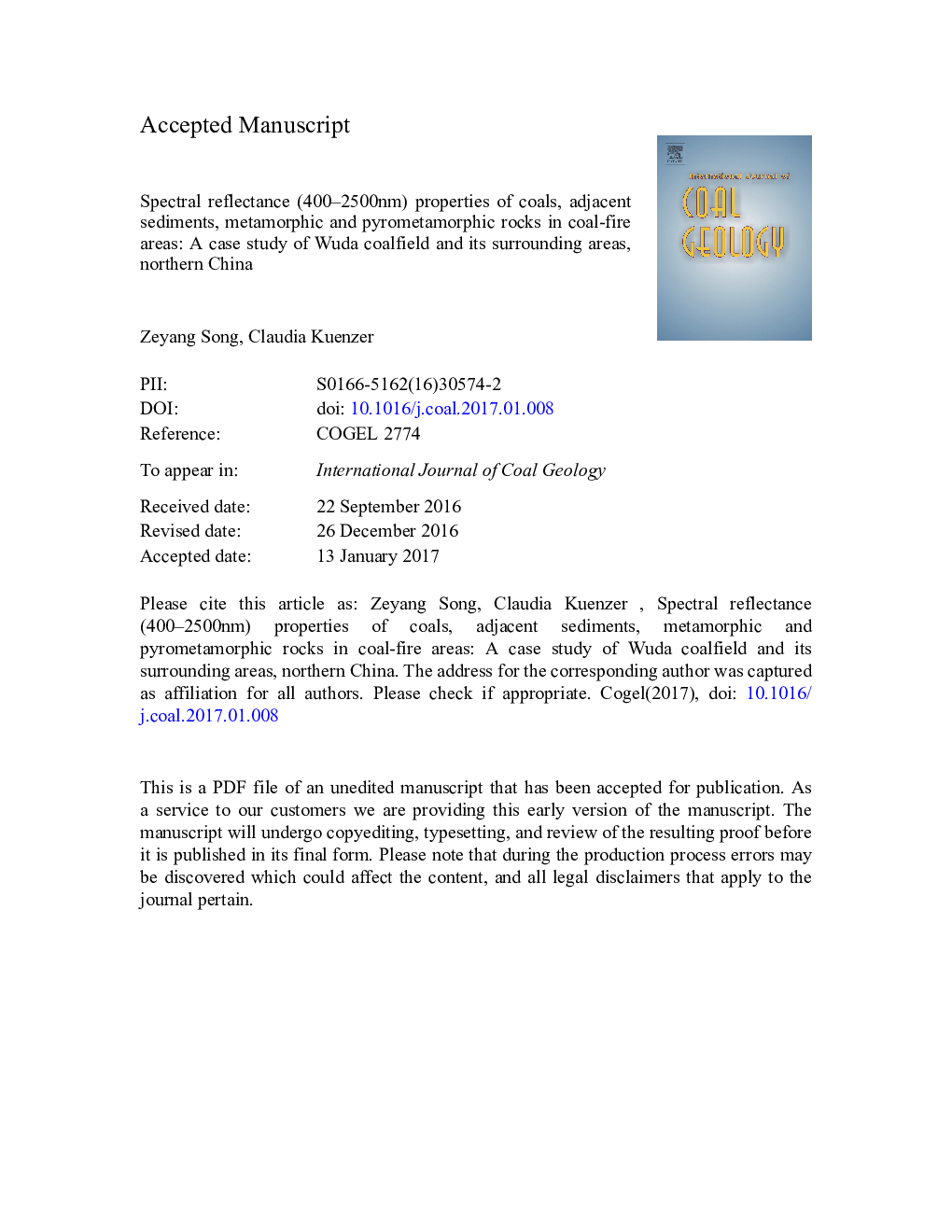| Article ID | Journal | Published Year | Pages | File Type |
|---|---|---|---|---|
| 5483660 | International Journal of Coal Geology | 2017 | 33 Pages |
Abstract
Although remote sensing is an effective tool extensively employed to detect and monitor coal fires, continuous spectral reflectance properties of typical land surfaces such as coals, adjacent sediments, metamorphic rocks and pyrometamorphic rocks in coal-fire regions have not been reported yet. Field- and laboratory spectral reflectance of coals (bituminous, anthracite, and coal waste), sediments rocks (sandstones, siltstone, desert sands, limestones, and shale), metamorphic and pyrometamorphic rocks located in Wuda coalfield and its surrounding areas are investigated for the reflective domain ranging from 400Â nm to 2500Â nm. The results indicate that coal depicts the lowest reflectance (2%-10%) and strong absorption bands between 2200 and 2500Â nm resulting from organic matter. Pyrometamorphic rocks are characterized by weak absorption features at 1400 and 1900Â nm due to partial dehydration, and strong ferric absorption features between 850 and 1100Â nm attributed to thermal alteration and oxidation of the rocks. Sediments exhibit common absorptions features at ~Â 2200 and ~Â 2300Â nm probably related to AlOH vibrations and carbonate degenerate CO vibrations, respectively. Spectral reflectance increases with a decrease of the coal rank and particle size. The investigations on spectral reflectance properties of typical land surfaces in coal-fire regions provide the basic understanding for applications of hyperspectral or multispectral remote sensing to classify land covers and to demarcate coal-fire risk areas in similar geological settings.
Related Topics
Physical Sciences and Engineering
Earth and Planetary Sciences
Economic Geology
Authors
Zeyang Song, Claudia Kuenzer,
